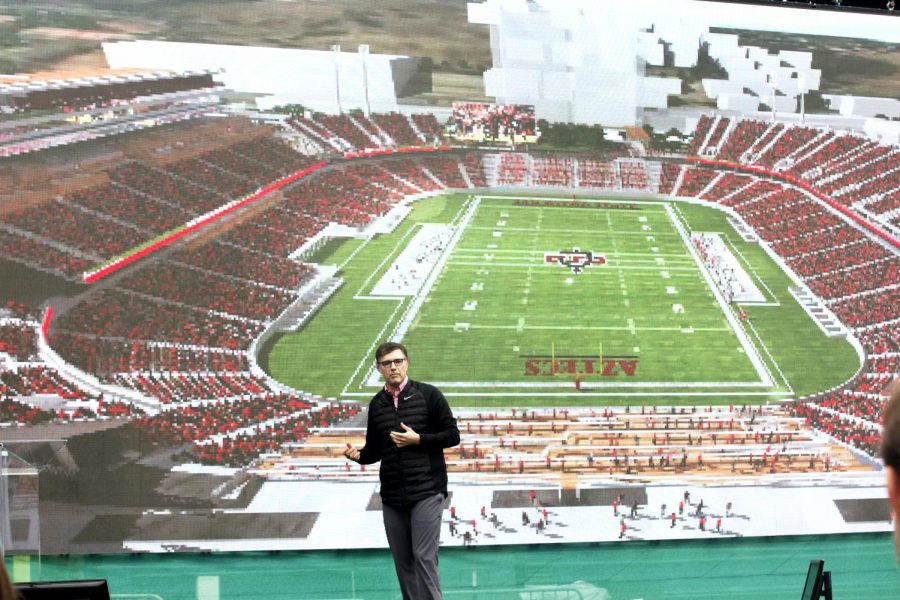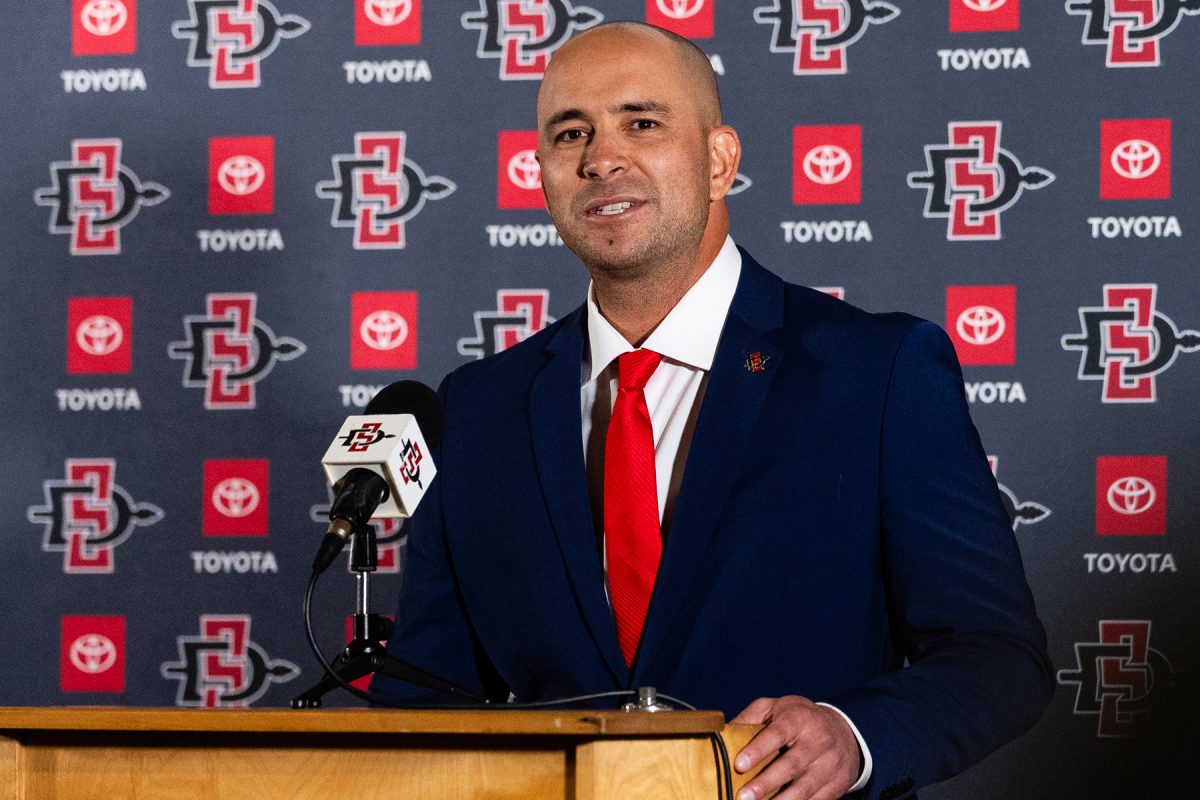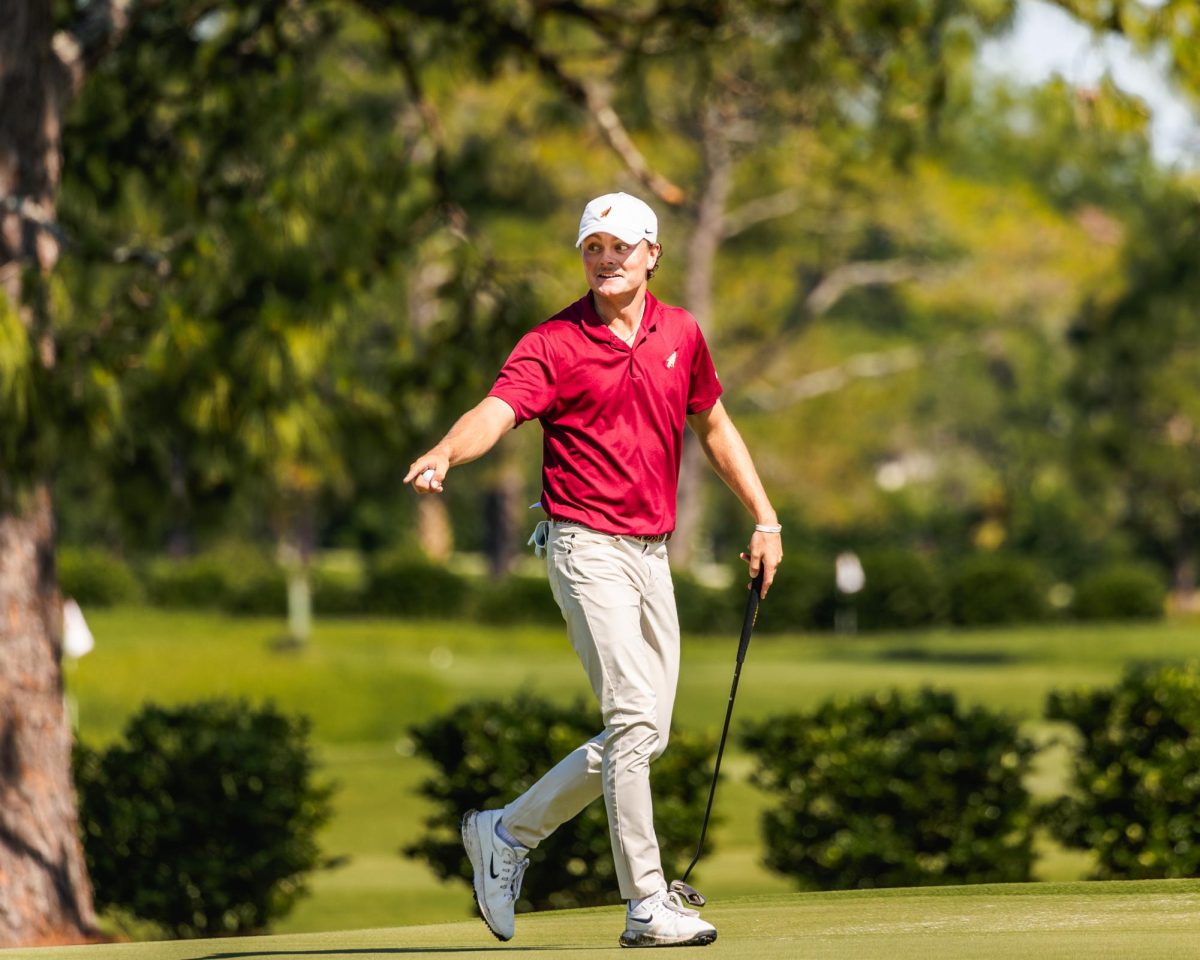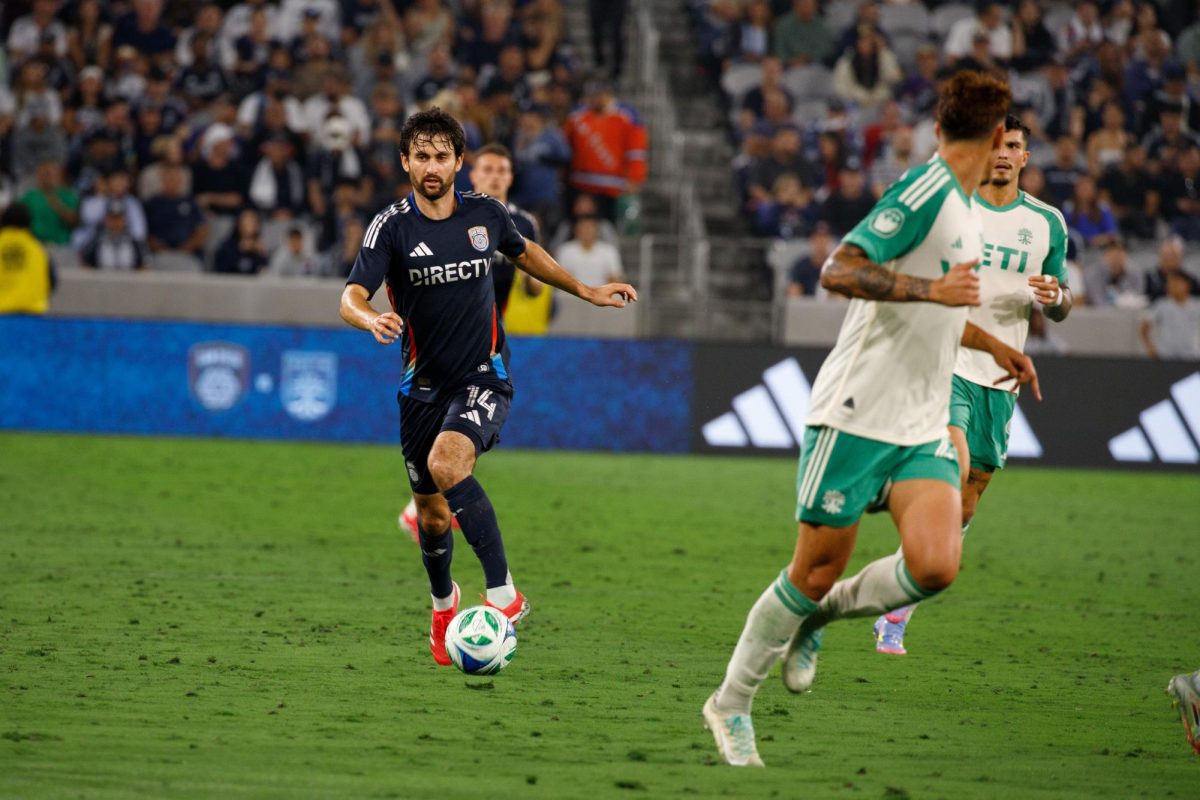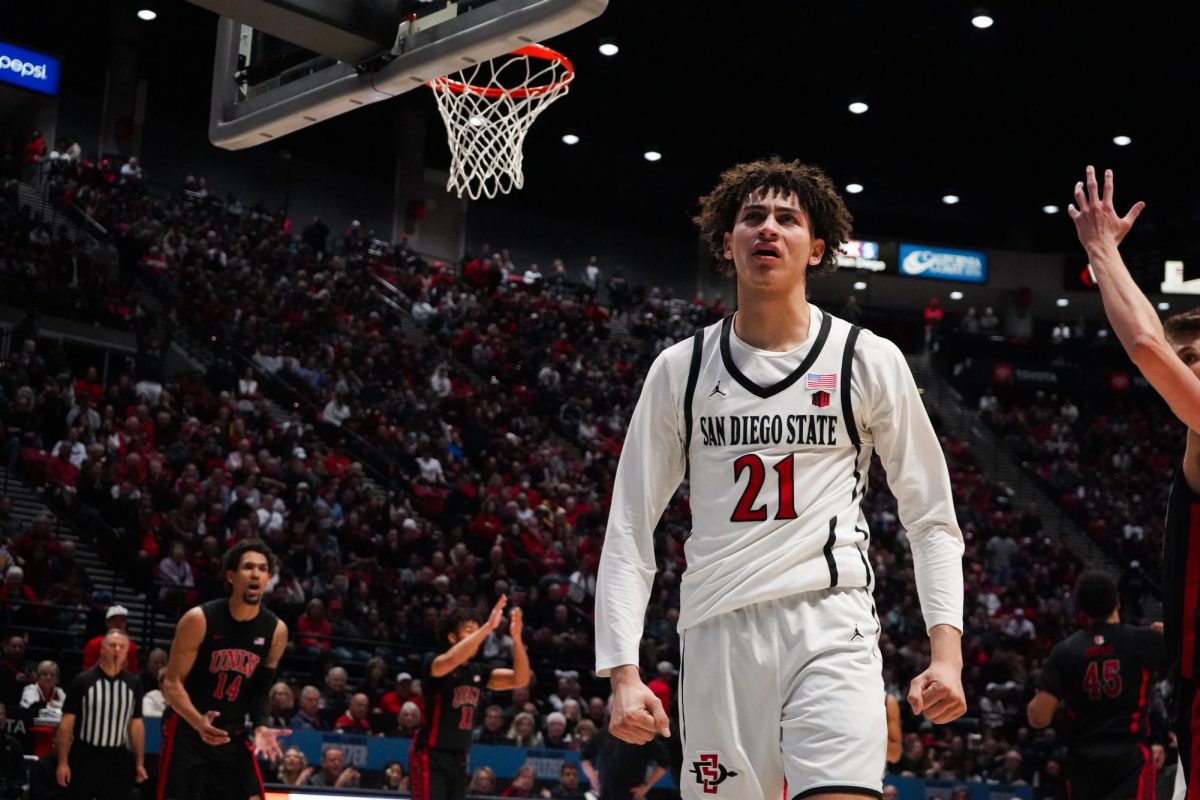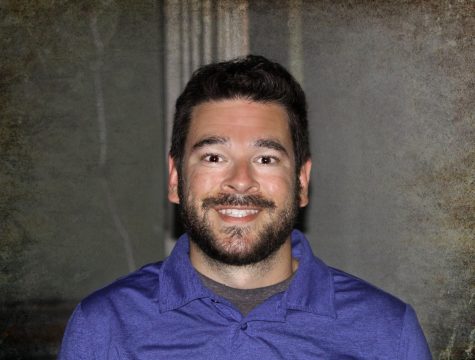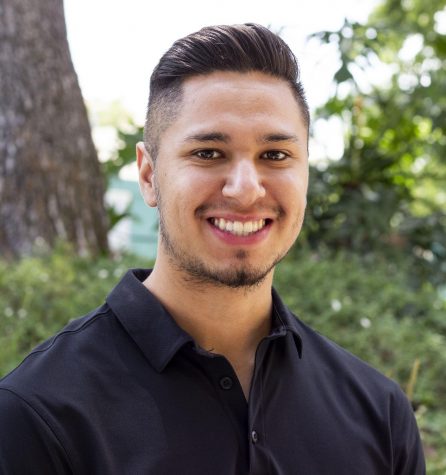San Diego State Athletics held an event at SDCCU stadium on Nov. 30 unveiling its plans for a multi-use stadium at the Mission Valley site.
SDSU Director of Athletics John David Wicker presented a virtual walk-through of the architectural renderings of the proposed $250 million stadium.
“(It’s) a stadium that we envision as one of the top multi-use stadiums in the country, a stadium that will create a definitive home field advantage for Aztec football,” Wicker said. “SDSU fans have long dreamed of the day we would return Aztec football to campus, and that final journey begins today.”
The stadium is designed to have 35,000 seats, and while the stadium concourse will be built on ground level, the field itself will be 30 feet below.
The south end zone will feature a terrace level, along with standing room areas with drink rails and a club space. A club space will also be available on the west side of the stadium and to field level patrons.
On the field will be portable loge boxes, which can be moved to different areas on the field depending on the type of event. Loge boxes, along with suites, will also be located on the concourse level.
The west side of the stadium will have a premium deck, club seating section with an associated club space, and suite and press levels located above the club seating.
The east side of the stadium will have two decks of seating, with a mix of season ticket levels and concourse development. The concourses will include 18 different “garden rooms.”
The garden rooms will have a variety of outside seating options and will be serviced by food trucks, traditional concession stands, modified shipping containers, or even be treated as beer gardens.
The garden rooms can be used every day of the year but will be gated off and reserved for stadium patrons on game day.
The north end of the stadium will host the student section with adjacent seating on either side and will have fixed seats as well as standing room areas with drink rails.
The north end will also have a garden room catered towards students needs, with food priced within a student’s budget and geared more towards their overall tastes.
The university will be working with architectural design firm POPULOUS, which specializes in designing large entertainment venues and stadiums.
Scott Radecic, a founder and Senior Principal at POPULOUS, said that the goal of the proposed stadium is to host all kinds of different sporting events, including a potential MLS team, and that the 35,000-seat stadium could be expanded to 55,000 seats to accommodate the needs of an NFL team if necessary.
“The goal objective from the beginning was to create a 35,000-seat multi-purpose stadium, home to Aztec football, being able to accommodate soccer and an MLS team, someday being able to accommodate a future NFL franchise if they came back to the city, and also provisions for concerts and all kinds of other events,” Radecic said.
SDSU head football coach Rocky Long spoke about what a new stadium would mean not only to the program but to the entire athletic department.
“This is an exciting day for every one of us in the athletic department because we see this as an avenue and an ability with a new stadium for us to go to bigger and greater heights,” Long said. “It needs to be done and it needs to be done quick so everybody in this community, as well as our school and our athletic department, get to benefit.”
The unveiling came one day after the university formally released its architectural renderings to the public of its plans for a multi-use stadium, along with an expanded campus on the current SDCCU stadium site.
“Our vision for this location is a world-class university campus, research center, and stadium venue,” SDSU President Sally Roush said. “Expansion at this location would allow San Diego State University the opportunity to grow, and to further our mission to educate a diverse and highly-educated workforce.”
The new renderings are the latest step forward for the Friends of SDSU group, as they try to get the required 71,000 signatures needed to get on the Nov. 2018 ballot, where they would compete against the SoccerCity initiative, which hopes to turn the Mission Valley site into a soccer stadium for a Major League Soccer team, along with retail and residential spaces.




